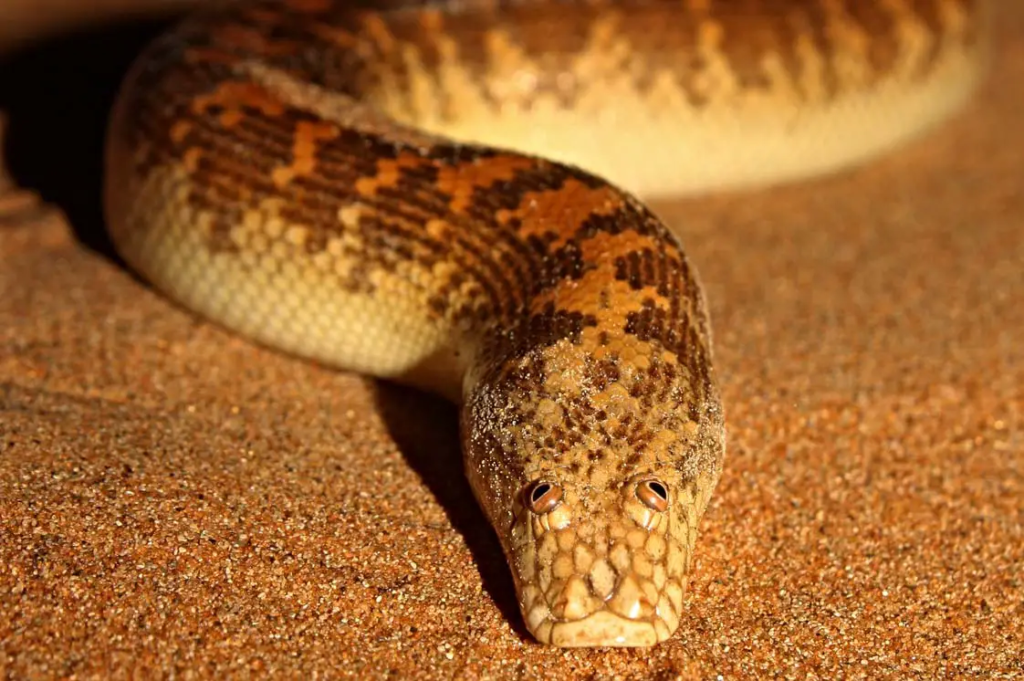In the enchanting world of reptiles, few creatures evoke as much fascination as the boa. With its sinuous form, striking patterns, and elusive demeanor, the boa captivates both seasoned herpetologists and amateur enthusiasts alike. Among the diverse array of boa species, the Arabian sand boa stands out as a testament to nature’s ingenuity and adaptability.
Exploring the Arabian Sand Boa
The Arabian sand boa, scientifically known as Eryx jayakari, is a species endemic to the Arabian Peninsula, particularly found in regions characterized by sandy desert landscapes. Its distinctive appearance, marked by sandy hues and intricate patterns, allows it to seamlessly blend into its arid surroundings, making it a master of camouflage.

Despite its relatively diminutive size compared to other boa species, the Arabian sand boa possesses a formidable presence. Typically measuring between 1 to 2 feet in length, this nocturnal creature relies on stealth and ambush tactics to hunt its prey, which primarily consists of small rodents and lizards. With its muscular body and keen sense of smell, the Arabian sand boa is a skilled predator, capable of subduing prey with remarkable efficiency.
Diversity in the Boa Family
While the Arabian sand boa holds a special allure, the boa family encompasses a diverse range of species, each with its own unique characteristics and habitats. From the vibrant hues of the emerald tree boa to the iridescent beauty of the rainbow boa, these serpents showcase the splendor of biodiversity.
1. Boa Hancock: Although not a species of boa in the biological sense, Boa Hancock, named after the character in the popular manga series “One Piece,” has garnered significant attention in popular culture. Known for her beauty and prowess, Boa Hancock embodies the allure and mystique associated with the boa.
2. Boa Stock: In financial circles, “boa stock” refers to shares of companies associated with the BoA (Bank of America) Corporation. While not directly related to reptiles, the term demonstrates the broad reach and versatility of the word “boa” across different domains.
3. Rosy Boa: Native to the southwestern United States and northwestern Mexico, the rosy boa is cherished by reptile enthusiasts for its gentle disposition and striking coloration. With its rosy blush and intricate patterns, this species exemplifies nature’s artistry.
Unlocking SEO Potential
For enthusiasts, breeders, and businesses alike, harnessing the power of search engine optimization (SEO) can unlock new opportunities to connect with audiences and drive engagement. By strategically incorporating high-CPC keywords such as “boa,” “arabian sand boa,” and “emerald tree boa” into content, individuals can enhance their online visibility and attract targeted traffic.
Whether it’s sharing care tips for novice owners, showcasing breeding projects, or offering insights into the conservation status of boa species, content creators have a wealth of topics to explore. By weaving relevant keywords organically into articles, blogs, and product descriptions, individuals can improve their search engine rankings and reach a broader audience of reptile enthusiasts.

Conclusion
In the realm of reptiles, boas reign supreme as ambassadors of intrigue and wonder. From the elusive Arabian sand boa prowling the dunes of the desert to the resplendent emerald tree boa draped amidst lush foliage, each species offers a glimpse into the marvels of the natural world. By embracing SEO strategies and crafting compelling content, enthusiasts can share their passion for boas while expanding their digital footprint in the ever-evolving landscape of the internet.


